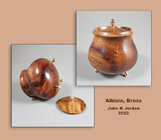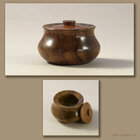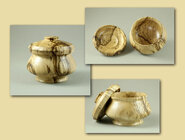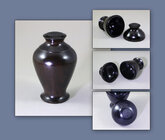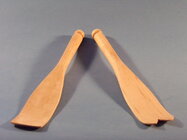I turned this box elder maple burl box. Its about 3" x 3" and is pretty thin. The lid fit perfect with very light resistance (not snap fit). 2 days later, the body of the box did what wood does. It can push the lid down, but it pops back up in any orientation.
My question is this: Has anyone had any success "training" the wood back into round? I thought about putting small, lightly damp sponge in a plastic cup inside the box and then close the lid with a rubber band to hold it closed. leave it for a week or so and let it fully dry with the lid holding the body round.
Worth a shot? Going to ruin the box?
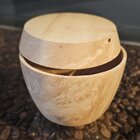
My question is this: Has anyone had any success "training" the wood back into round? I thought about putting small, lightly damp sponge in a plastic cup inside the box and then close the lid with a rubber band to hold it closed. leave it for a week or so and let it fully dry with the lid holding the body round.
Worth a shot? Going to ruin the box?


